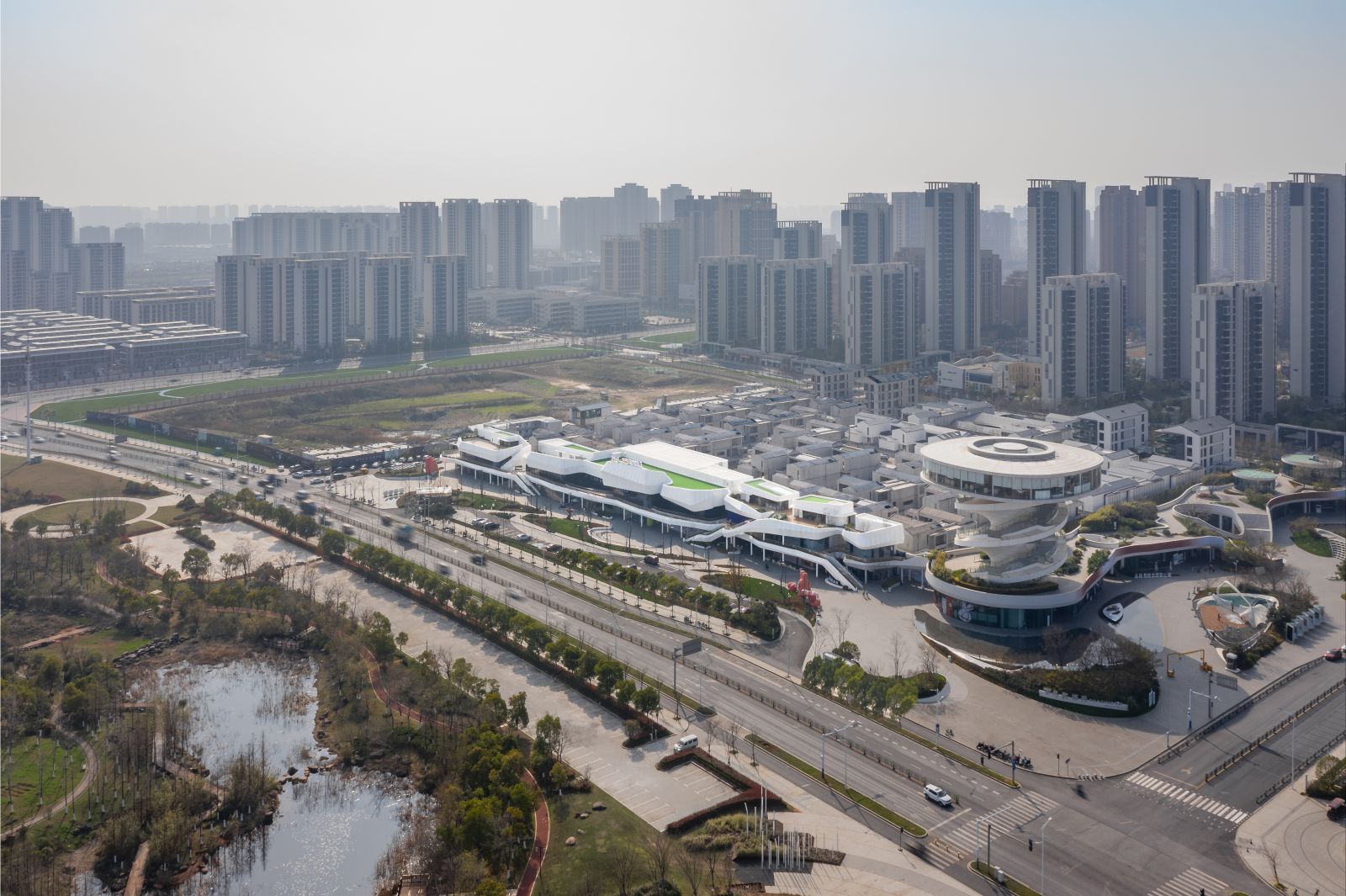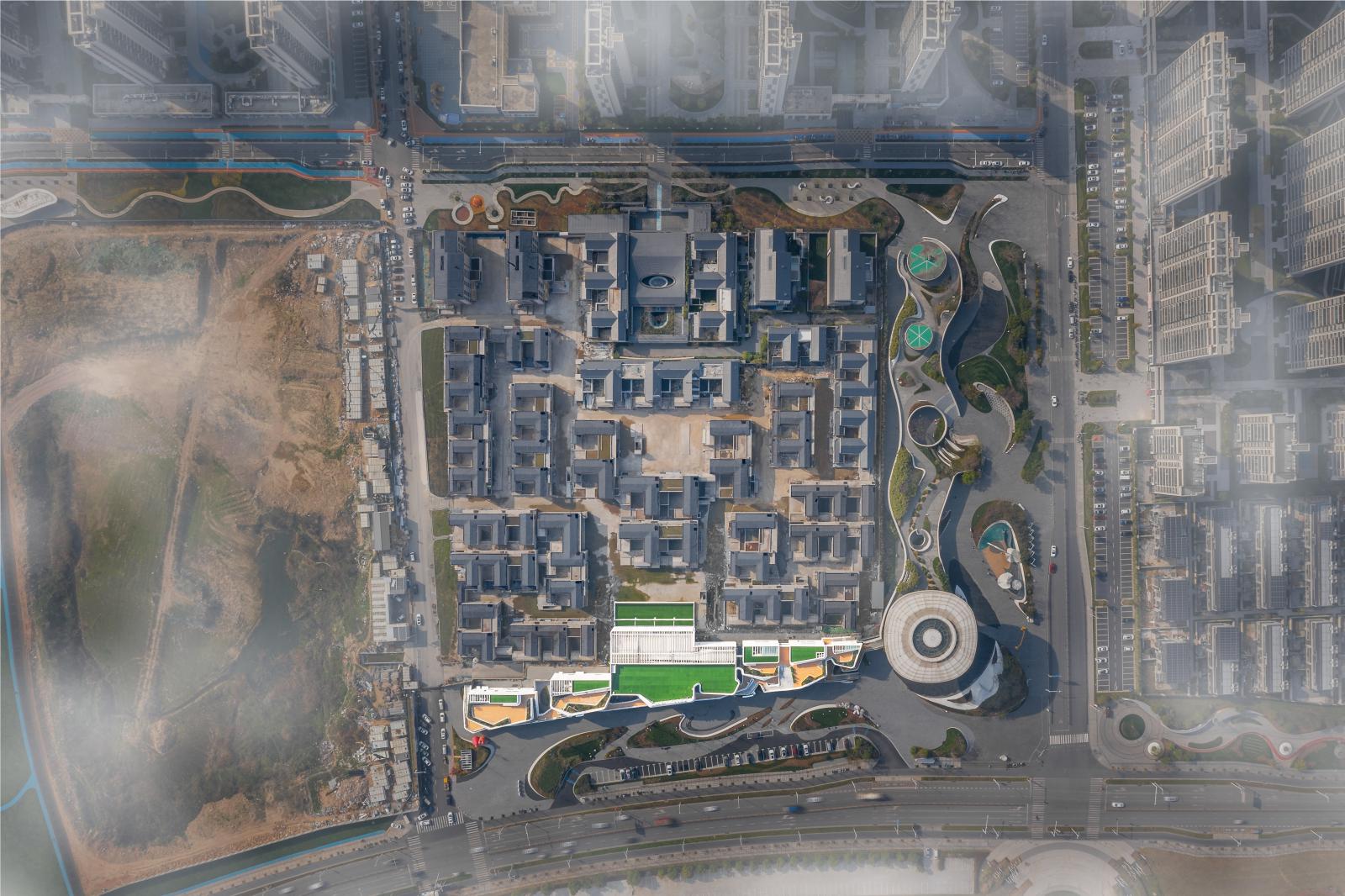The project is located in the southwest corner of the central city Nanchang, Jiangxi Province. The east side of our site is adjacent to Xiang Lake, which is rich in hydrology and has several tributaries of the Fu River flowing into it.
Our client hopes that the entire area can become a cultural and leisure destination with Nanchang characteristics, creating a water-friendly leisure and entertainment complex, a liveable environment that coexists and thrives with the ecosystem. Thus, the location of this project, the core area of both the Waterfront Cultural and Leisure Corridor and the Waterfront Community Living Area, it is of great significance for the client’s vision of the region.
Inspiration
Our inspiration comes from the organic forms of Nanchang’s red soil and natural wetlands, as well as the power inherent in the linear, interwoven, and undulating topography. These elements reminded us of the ink-wash paintings of local literati. We hope to absorb these elements and apply them to the design of the undulating three-dimensional contours of the commercial façade.
Form Making
The adjacent villa project follows a strict grid design. Integrating the wetland landscape concept of Xiang Lake with the grid villa was a challenge encountered during the initial conception of this design. To address this issue, we created corridors by cutting into traditional strip commercial blocks, which not only echo the forms of the villas but also introduce the wetland landscape.
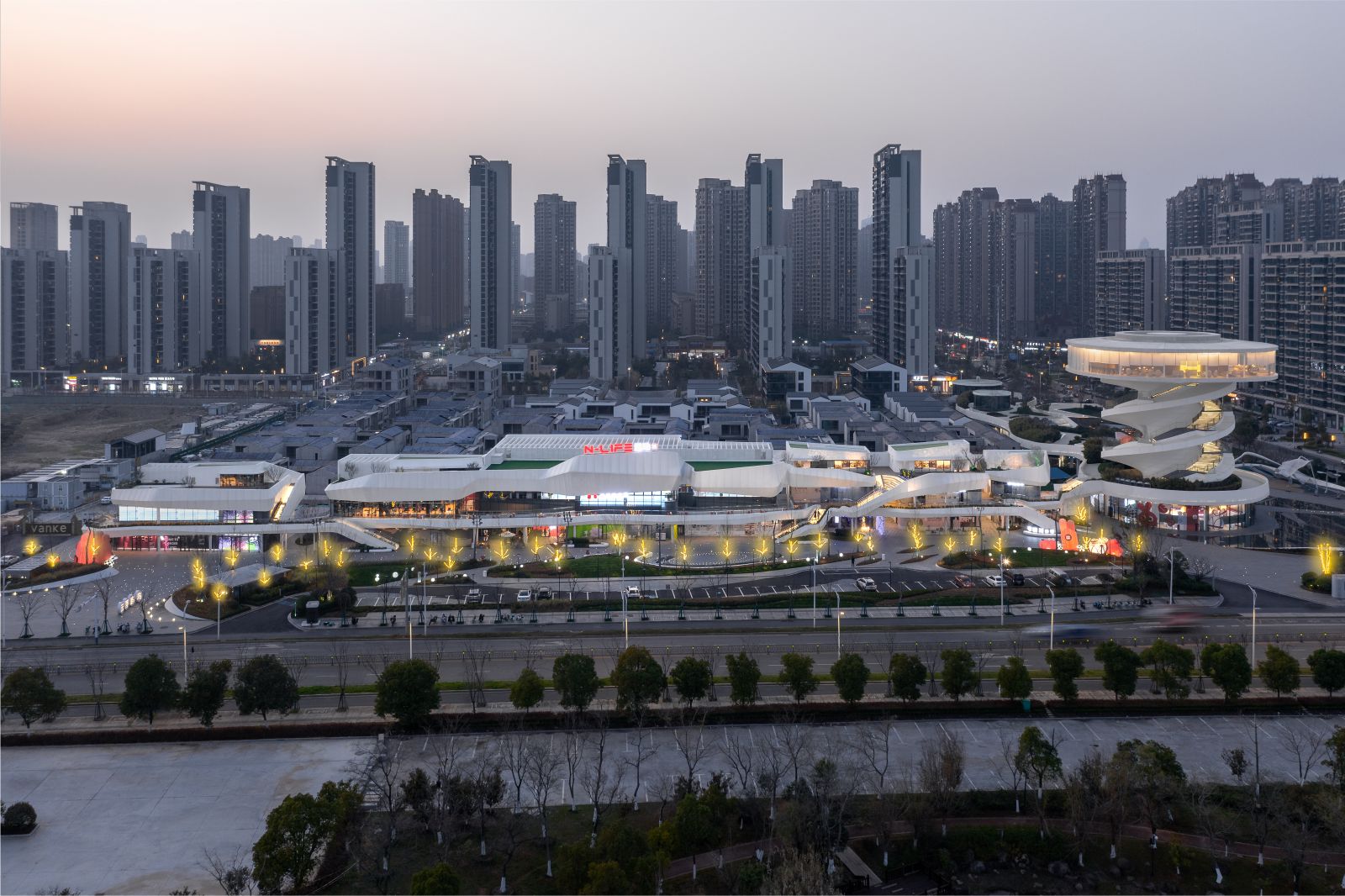
Additionally, we extracted curved design elements from the local wetlands and red soil and applied them to the design of commercial outdoor terraces. These terraces are connected on the second and third floors, serving as a transition from the natural landscape to the grid villas. This approach not only promotes the connectivity between the villa and the landscape, but also endows the commercial architecture with distinct identity.
Circulation
We intentionally integrated the commercial circulation path into the design of the “façade”, connecting people from ground level to rooftop terraces, and from walkways to courtyards, creating maximum practicality and comfort.

The commercial pedestrian traffic is redirected to higher floors, greatly enhancing the spatial value of the higher floors. This design embodies an open, charming, and integrated community space where people can shop, stroll, enjoy food, and experience unique spatial delights.
Material and Colours
In order to create a suitably scaled and tension-filled curved façade, the project underwent multiple rounds of material research, starting with plain concrete, small-texture titanium zinc plate, GRC, and ultimately settling on aluminum curtain wall. This material was chosen for its ability to achieve a pure and naturally flowing architectural effect with the minimum number of panels and joints.
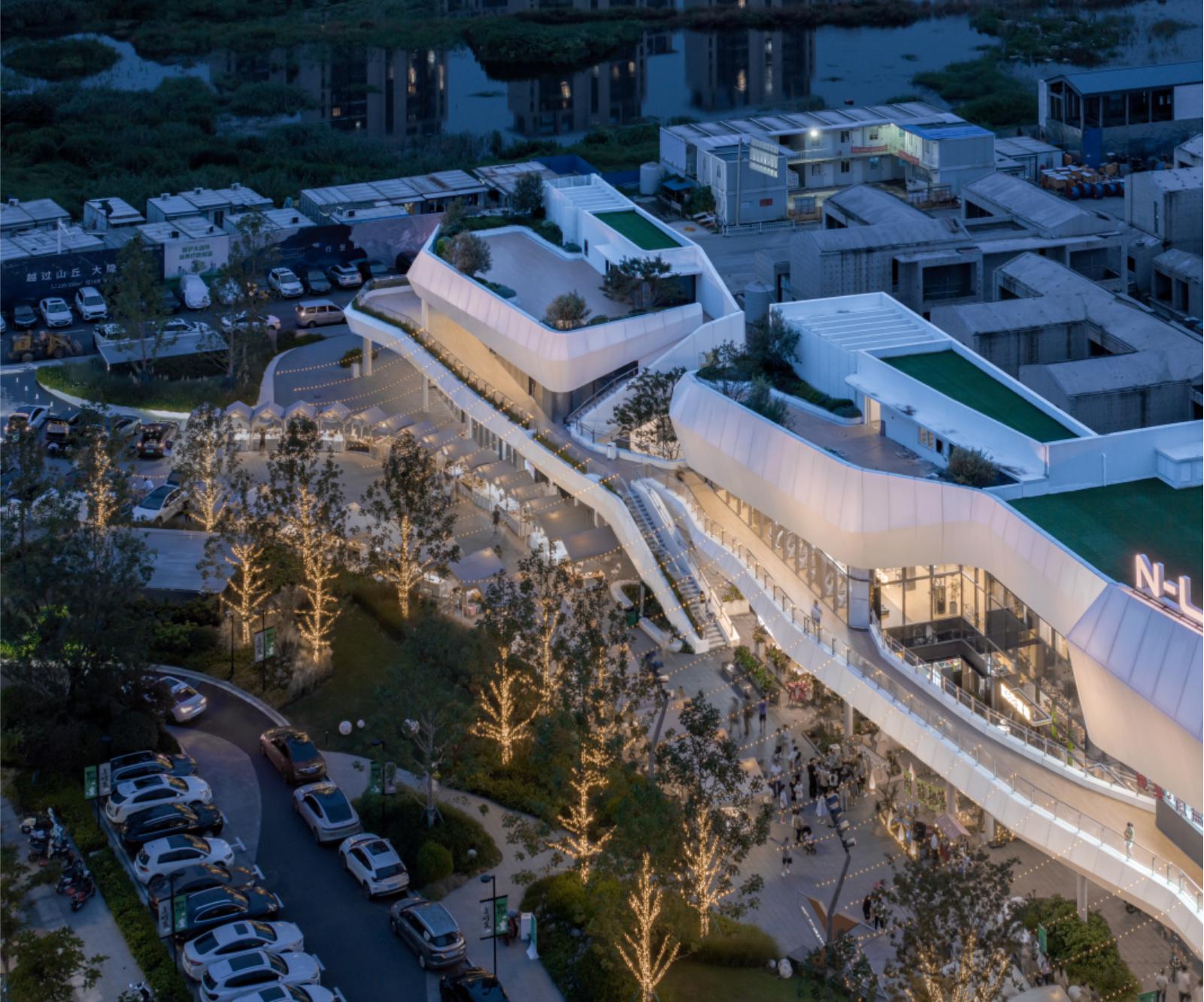
The largest single curtain wall in this project exceeds 7 meters in height, encompassing the entire upper section of the parapet wall, the folding façade design, and the outdoor ceiling details. In terms of colour scheme for the façade, the design opts for white and grey tones that serve to highlight the green hue of the wetland plants.
The use of white aluminium panels, ultra-white glass, light grey stone flooring, and dark grey metal frames creates a rich sense of layering and different gradients in the façade design. At the same time, the warm colour scheme for the outdoor terraces and ceilings complements the curved contours, highlighting the regional characteristics of Nanchang’s red soil.

Summarize
The floating pier commercial project is an important part of the overall development of the Nanchang central urban area, with the aim of breaking through traditional community commercial models and creating a more iconic regional destination with a broader urban perspective. However, there are two key conflicts in this project. Firstly, the villa community itself has higher requirements for privacy, which needs to be balanced with the public nature of the commercial area.
Secondly, it is necessary to integrate the natural wetland landscape of Xiang Lake with the grid villa building forms. Our design starts from the local regional characteristics of Nanchang and cleverly resolves these conflicts through architectural design language, presenting more possibilities for community commercial activities, providing more outdoor space for the commercial area, and providing a better platform for visitors to enjoy the beautiful scenery of Xiang Lake. Source by Spark Architects
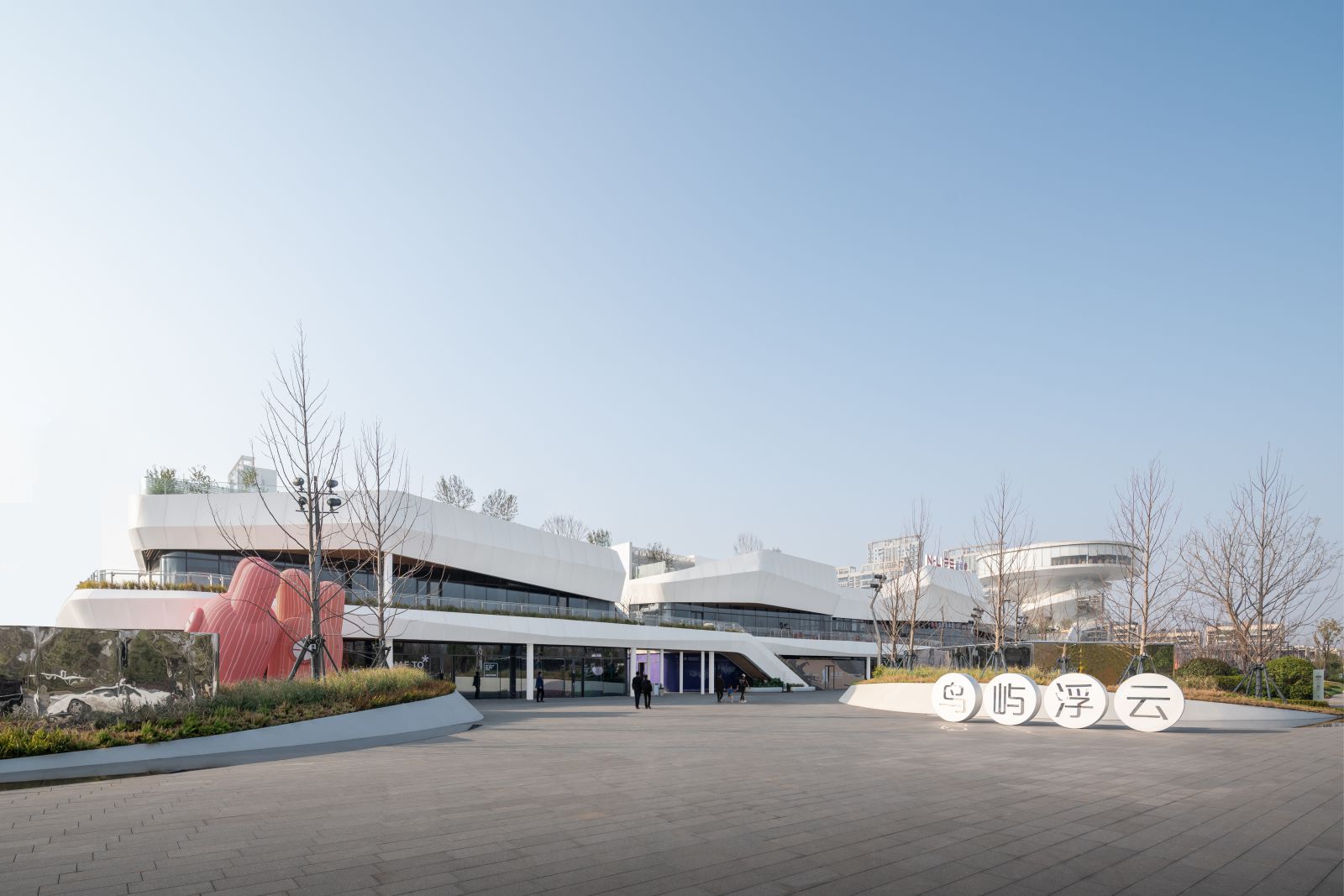
- Location: Nanchang, China
- Architect: Spark Architects
- Project Team: Stephen Pimbley, Wenhui Lim, Yao Jun, Luca Maccarinelli, Zhusong Mei, Javier Campoy, Mark Mancenido
- Client: Shu Zhu, Shuiping Xiong, Qinghua Zhou, Xianlong Zhao, Huile Li, Fanfan Fan, Zhiting Liu
- Total GFA: 8,696 sqm
- Completion Year: 2022
- Photographs: ZY Architectural photography, CreatAR Images, Courtesy of Spark Architects
